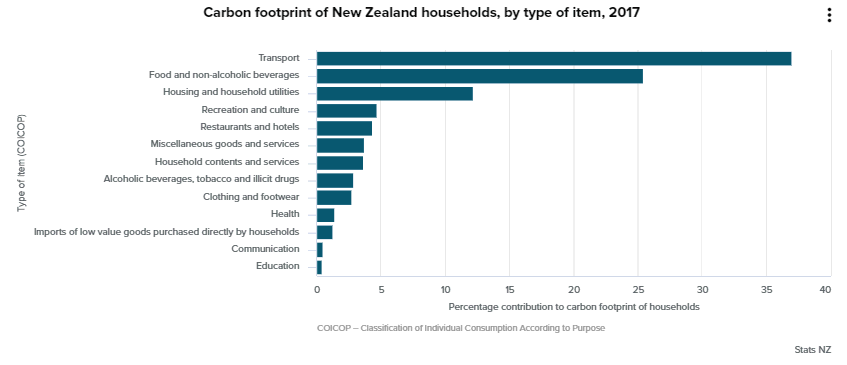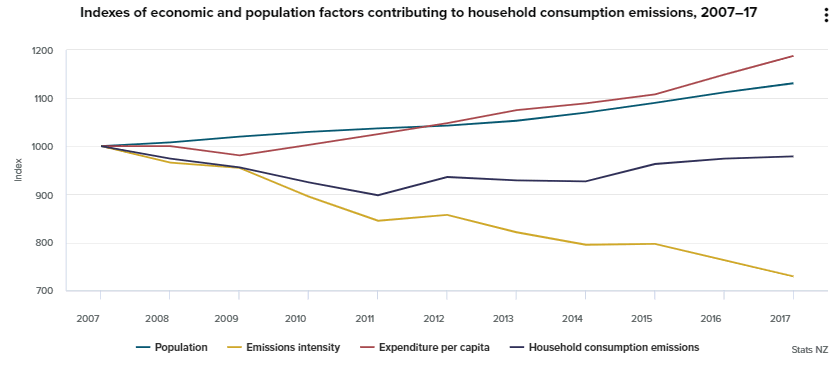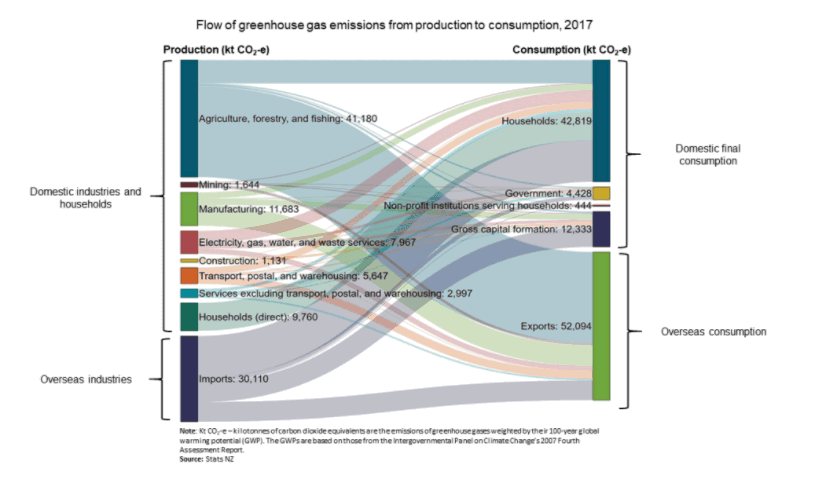Source: MIL-OSI Submissions

Transport drives households’ carbon footprint up – Media release
27 August 2020
Household transport emissions increased by 2,069 kilotonnes (15 percent) between 2011 and 2017, Stats NZ said today.
This led to an overall increase in household emissions of 3,576 kilotonnes (9.1 percent).
New data released today by Stats NZ on consumption-based greenhouse gas emissions shows that while the direct use of fuel by New Zealand households is significant, it represents just over half of the total transport carbon footprint of households.
Indirect transport emissions, which arise from the extraction, refining, and transport of fuel before its use, and household use of other modes of transport such as air, water, and rail, are becoming an increasingly significant part of the total transport carbon footprint of households.
“These findings highlight the ‘hidden’ role households have in driving emissions,” environmental-economic accounts manager Stephen Oakley said.

Households contributed 71 percent to New Zealand’s total carbon footprint in 2017. Transport accounted for 37 percent of the carbon footprint of households, food and non-alcoholic beverages contributed 25 percent, and housing and household utilities, which included the use of electricity, contributed 12 percent.
“This new data shows that the choices households make contribute significantly to New Zealand’s carbon footprint,” Mr Oakley said.

The increase in the carbon footprint of households from 2011 was driven by increases in both population and expenditure per capita, offset by falling emissions intensity (emissions in relation to expenditure). From 2011 to 2017, the household carbon footprint increased by 1.5 percent a year (compound annual growth rate). Over the same period, expenditure per person increased by 2.5 percent a year and population increased by 1.5 percent a year. In contrast, emissions intensity decreased by 2.4 percent a year over the same period.

New Zealand is a net exporter of emissions
In 2017, New Zealand’s consumption-based emissions were 60,024 kilotonnes of carbon dioxide equivalents. The consumption-based approach allocates all emissions associated with production and distribution of a good or service throughout its entire supply chain to the point where it is used by a final consumer, such as a household, or in investment, such as new buildings.
This approach accounts for the emissions embodied in trade (including imports and excluding exports). New Zealand is a net exporter of embodied emissions as its consumption-based emissions were significantly less than its production-based emissions from 2007 to 2017.

Text alternative for Flow of greenhouse gas emissions from production to consumption, 2017.
Export emissions were mainly from agricultural products, which have a high proportion of embodied methane and nitrous oxide. New Zealand’s imports were mostly manufactured goods, which contain mainly embodied carbon dioxide.
“Adding consumption and trade dimensions gives a more complete picture of how our participation in the global economy drives emissions,” Mr Oakley said.
“This release ext



